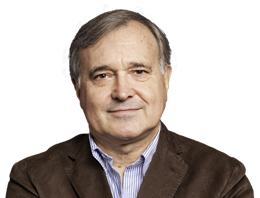Aste forever.
Tavole originali, libri e albi rari, model sheet e rodovetri di disegni animati, oggetti di ogni tipo.
Sembra proprio che le aste siano un business in crescita, in questo periodo, con pezzi importanti messi in vendita al miglior offerente.
Dopo le notorie aste organizzate dalla società torinese Little Nemo di Sergio Pignatone (e delle quali abbiado dato conto anche in questo blog, io e i miei allegri compagni di bisboccia), ecco farsi avanti anche Stefano Bartolomei, tramite la Finarte, casa d’aste specializzata in arte contemporanea.
The original sheet of animation paper features original lead pencil art of Donald Duck in his first appearance in the 1934 Silly Symphony The Wise Little Hen.
In occasione della seduta d’asta del 20/21 gennaio, Finarte mette in vendita per la prima volta una quarantina di lotti di alto collezionismo costituiti da tavole e illustrazioni per l’editoria a fumetti e popolare. Gli interessati possono visitare il catalogo elettronico nel sito: http//www.finarte.it (lotti 350-368, 569-587),
Chi desideri ricevere il catalogo cartaceo può comunicare il suo indirizzo a info@comics101.it.
Varie meraviglie si “battono” in questo periodo anche nel resto del mondo, come le cards augurali del Little Nemo di Winsor McCay che mostro in questo post.
Ecco cosa riporta on line il gruppo di lavoro del magnate Steve Geppi, distributore e collezionista americano di rilevanza stratosferica: la messa in vendita dei primi disegni di Donald Duck.
Cito, in merito, quanto segue.
The classic tale adapts the fairy tale The Little Red Hen and recounts how the wise little hen teaches the value of hard work to the lazy Donald Duck and Peter Pig (Meo Porcello in Italia). The animated short was directed by Wilfred Jackson and featured animation by Art Babbitt, Dick Huemer and Dick Lundy. The short was released on June 6, 1934, though this art was most likely drawn in December, 1933.
While rough sketches of Donald may have been produced before it, it was this model sheet that finalized Donald’s look for his first on-screen appearance. The model sheet contains eight different, full-body images of Donald as well as a preliminary sketch of his body shape and seven head shots, showing different views and emotions. A full-body image in the upper right hand corner has been pasted over with a new image of Donald as seen from the back. Artist Clyde Geronimi modified Donald’s tail (on the printed version of this sheet), giving it its modern feathery look, as opposed to the plucked bump featured in the other seven full-body drawings of Donald.
Informazioni più dettagliate su questo pezzo d’arte si trovano al sito http://www.hakes.com/, ma per fare un favore a tutti quanti, le copio di seguito:
Item Description
9.5×12″ sheet of animation paper with 4 peg holes along bottom margin and 2 peg holes along top margin as produced. Original lead pencil art of Donald Duck for his first appearance in the 1934 Silly Symphony “The Wise Little Hen.” (…)
This model sheet art finalized Donald’s look for his first appearance on screen. Sheet contains 8 different, full-body images of Donald as well as a preliminary body shape sketch and 7 head shots, showing different views and emotions. Full-body image in upper right-hand corner has paste-over with new image of Donald as seen from the back. (…)
When held to light, one can see prior drawing of Donald with large text reading “Back View.” Bottom right-hand margin has “The Wise Little Hen” text and cartoon serial number “U.S. 20” (United Artists Silly Symphony #20). Sheet has even aging and shows some minor handling wear. Sheet itself is Fine, but art remains Exc. Unique and historically important.
The greatest Donald Duck offering in our 41-year history. (R – $50.000 to $74.999)
Il © di Donald Duck è Disney.




